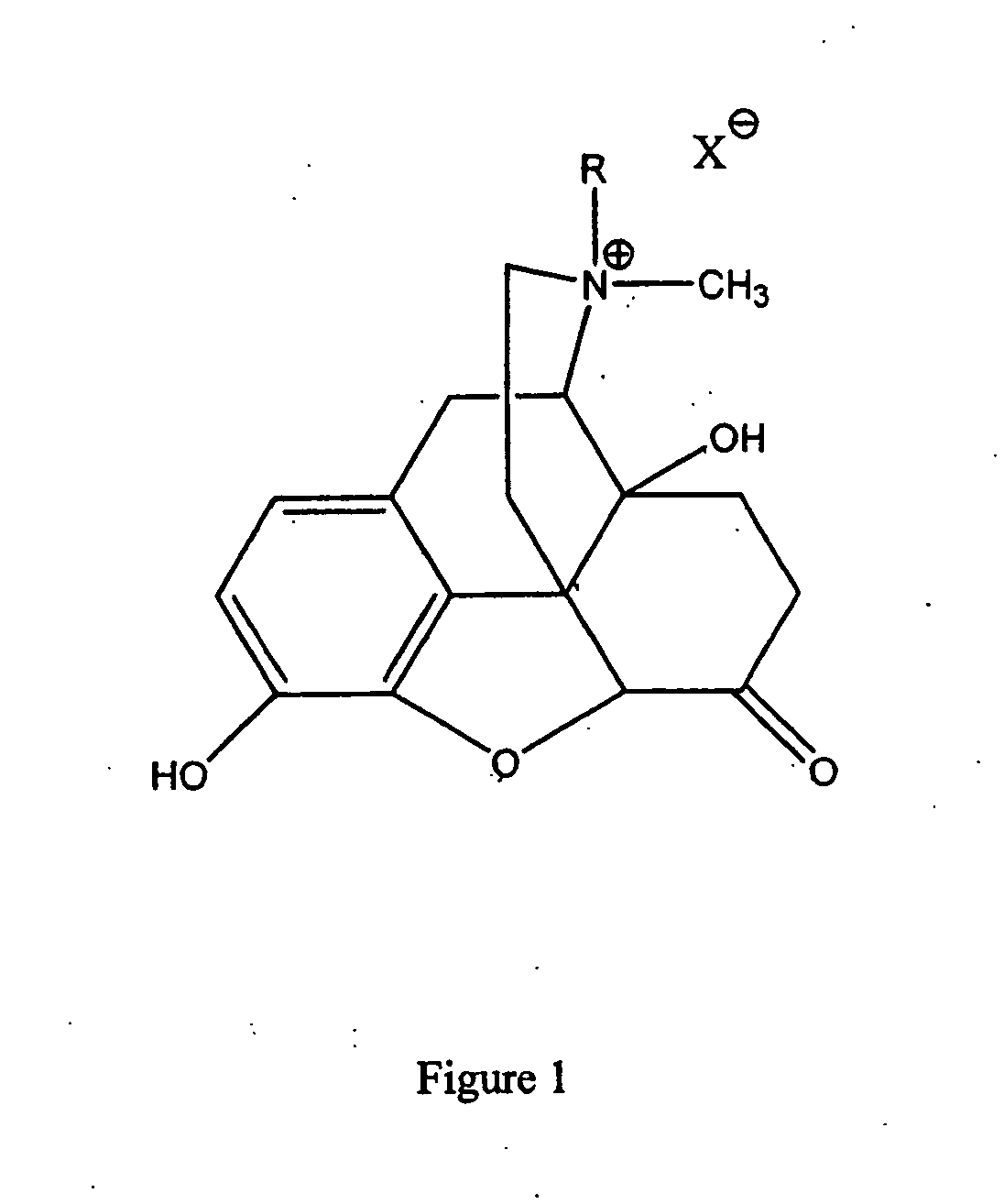Use of methylnaltrexone and related compounds to treat post-operative gastrointestinal dysfunction
a technology of methylnaltrexone and related compounds, applied in the field of compositions and methods for treating post-operative gastrointestinal dysfunction, can solve the problems of speeding up the recovery and discharge of patients, and achieve the effects of restoring gastrointestinal activity, accelerating gastrointestinal recovery, and low affinity for mu opioid receptors
- Summary
- Abstract
- Description
- Claims
- Application Information
AI Technical Summary
Benefits of technology
Problems solved by technology
Method used
Image
Examples
example 1
Study Design
[0095] The study was a double-blind, randomized parallel group study designed to evaluate the safety and activity of IV (intravenous) MNTX in the treatment of patients who are undergoing segmental colectomies via laparotomy and the duration of their post-operative ileus. Patients were randomized to either placebo (saline) or a fixed dose of IV MNTX of 0.30 mg / kg patient body weight in 50 cc of 0.9% normal saline hung as an IV piggyback (IVPB) to the main line and infused over twenty (20) minutes every six (6) hours until twenty-four (24) hours after the patient could tolerate solid foods, until discharged from the hospital, or for a maximum of seven (7) days. These time points for study drug discontinuation were selected in order to analyze the secondary efficacy endpoints of IV MNTX as well as the primary endpoints.
[0096] 65 patients were enrolled at approximately 8 study centers. This proposed sample size has approximately 80% power to detect a difference between tre...
example 2
[0117] Screening (Up to 2 Weeks Prior to Surgery). All patients who met the eligibility criteria had the study explained to them, and they signed an informed consent form at their pre-operative visit. A physical examination including vital signs, a detailed medical history, laboratory testing (Chemistry panel and complete blood count (CBC) with diff and platelets), a 12-lead supine, resting ECG, and a review of all past and current medications were obtained on all patients. Females of child bearing potential had a negative urine pregnancy test at least two (2) days prior to dosing.
[0118] Day of Surgery. Within twenty-four (24) hours of surgery, patients were randomly assigned to either the MNTX 0.30 mg / kg or placebo (saline) dose group.
[0119] Pre-induction management. Upon arrival to the pre-induction area or the operating room, all patients had IV catheters inserted. After induction, all patients received between 7-10 ml / kg of intravenous fluid per hour.
[0120] ...
example 3
Study Procedures
[0130] The following procedures were performed for each patient as specified below:
[0131] Physical Exam / Vital Signs (Screening and End of Treatment or Early Termination Visits)
[0132] Laboratory Assessments (Screening and End of Treatment or Early Termination Visits)
[0133] Electrocardiogram (ECG)
[0134] Pre & Post Dosing Vital Signs
[0135] Verbal Numerical Scale / Vomiting Assessment
[0136] Presence or Absence of Nasogastric Tube (NGT) or Orogastric Tube (OGT)
[0137] Liquid Challenge
[0138] Regardless of bowel sounds, the patient was given 30 cc of water by mouth (measured with an oral syringe) by a qualified research designee each time the patient was seen at 7 am, 12 pm, 5 pm, and 10 pm, ±30 minutes, starting with the first scheduled time point the morning following surgery until the patient could tolerate this 30 cc of liquids. Inability to tolerate clear liquids was defined as nausea and / or vomiting within the first 60 minutes of the challenge.
[0139] Bowel Soun...
PUM
| Property | Measurement | Unit |
|---|---|---|
| time period | aaaaa | aaaaa |
| time period | aaaaa | aaaaa |
| time | aaaaa | aaaaa |
Abstract
Description
Claims
Application Information
 Login to View More
Login to View More - R&D
- Intellectual Property
- Life Sciences
- Materials
- Tech Scout
- Unparalleled Data Quality
- Higher Quality Content
- 60% Fewer Hallucinations
Browse by: Latest US Patents, China's latest patents, Technical Efficacy Thesaurus, Application Domain, Technology Topic, Popular Technical Reports.
© 2025 PatSnap. All rights reserved.Legal|Privacy policy|Modern Slavery Act Transparency Statement|Sitemap|About US| Contact US: help@patsnap.com


